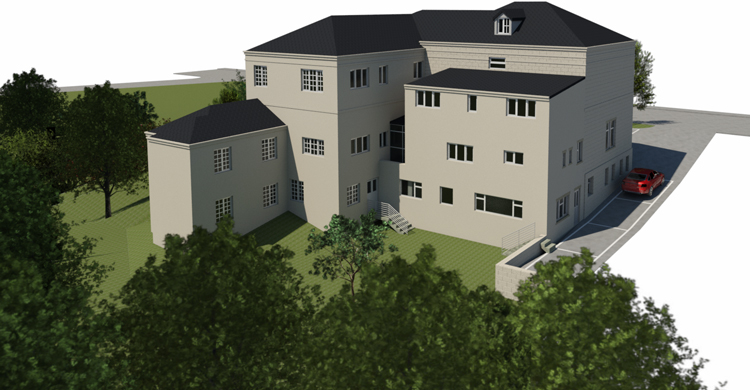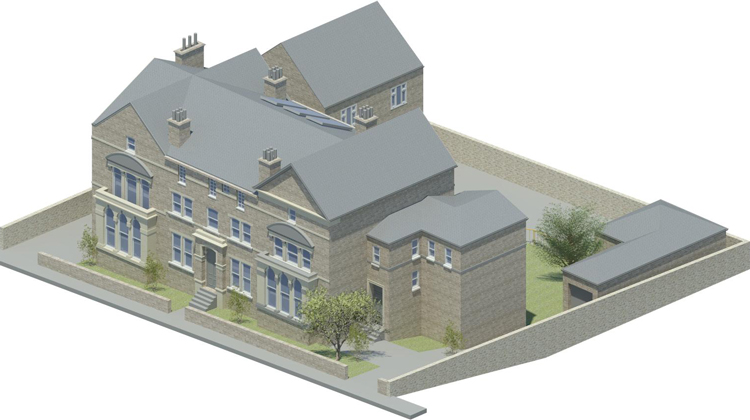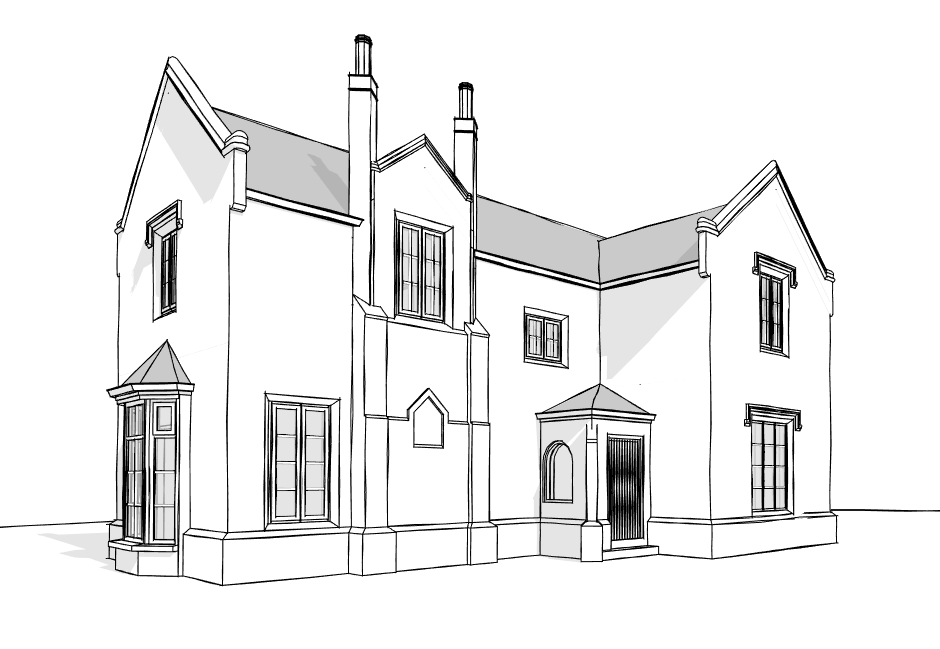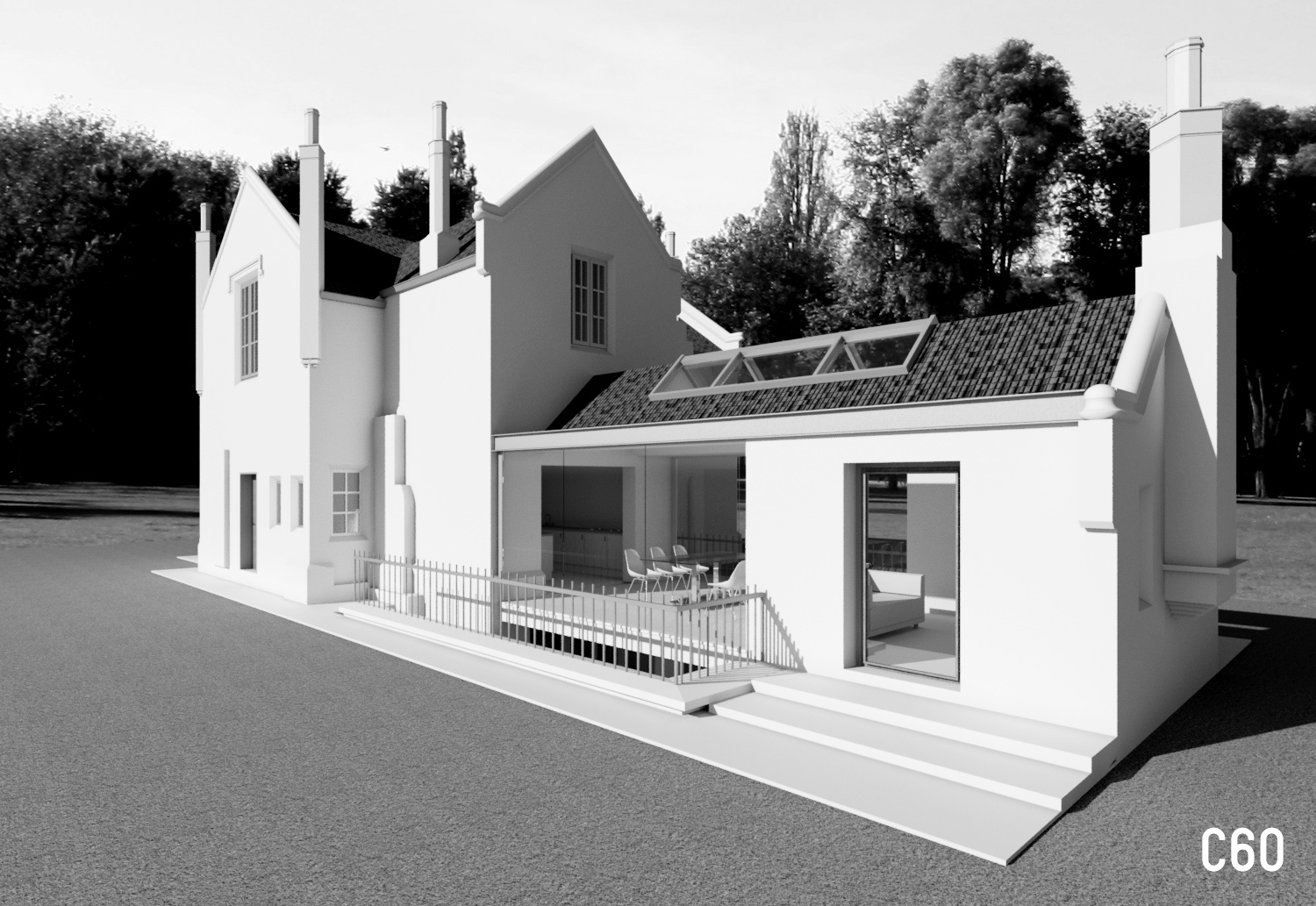So far, our approach has been different to other content providers as we chose versatility over simplicity in order to enable many use cases that would have been difficult or sometimes even impossible to implement without the creation of custom families.
All-in-One Families are based on the concept of having one highly parametric family (per category, like door, window, etc.) which allows to create many different types to be used in one project.
Here are a few use cases...
The following project has 39 different window types and each of them is a type of one and the same All-in-One Window Family. As you can see these windows vary in size, layout, glazing bars, and more.

Another example of a revitalisation project with 9 different All-in-One Window types and 19 different All-in-One Sash-Window types:

But it's not just the ability to create countless variations with different layouts and features, it's also about special features that are especially helpful for surveyors and architects, dealing with historical buildings that have to be modelled exactly the way they are like the following example from C60 Architects where tapered wall openings were essential.



All-in-One Families have their strength, but also their weaknesses, which is why we took a step or two back to see what we could do differently.
The strength
- The fist that comes to mind is versatility, meaning that a wide variety of requirements can be setup with just one single family
- That leads to consistency as there is just one family that is used instead of a variety of individually created families
- That results in time saving as there isn't that search for the next best fitting family every time the requirements change
- Overall reducing the project file size as less families need to be loaded (various types of one and the same family are more efficient).
The weaknesses
- Versatility comes with a price of more parameters leading to complexity
- Complexity leads to spending more time on learning how a family works and how to achieve all those wonderful versatile setups
- Complexity and a larger number of parameters also leads to more processing time (Revit updating the model on parameter changes)
Love & Hate Relationship
When looking at an All-in-One Family, there are parameters that are required to get to a specific setup and others that are optional for adjusting details. Let's take the All-in-One Bi-Fold & Sliding Door as a simple example (a much more complex example would be the kitchen) which allows the following basic use cases:
- Bi-Fold Door
- Patio Sliding Door
- Regular Sliding Door
Each of those basic use cases are available as door or window and single or double sided.
That means that there is a variety of parameters that needs to be set correctly to get to that basic setup before actually adjusting the essentials like width and hight or the nitty-gritty of frame dimensions, etc. (if you need that at all).
Initially we tried to help out with those basic settings by providing a type catalog, which many of our users didn't understand how to use or just missed because they renamed the family but not the type catalog or just didn't put them in the same folder. Lately we include a sample project with those basic setups which can just be copied and used as is or as starting point to adjust the nitty-gritty.
The drawback of providing all those basic variations via one single family are obviously a number of additional parameters that allow you to switch between them (which increases the perceived complexity) and a series of calculated parameters to ensure that everything works within its designed constraints (which increases the computational complexity).
There is a love & hate relationship with those All-in-One Families as they solve issues that other families can't solve but come with a price of complexity and performance overhead.
What's next - Love Only Relationship
During the last few months we have been experimenting with countless approaches to how we can keep the versatility of our All-in-One Families but without the complexity. As a result we are working on new families that are modular and separated rather than single all-in-one families.
That means that instead of a single All-in-One Family we are offering separated, specialized families sharing a modular system of nested families to provide consistency and shared functionality, dramatically reducing the parameters resulting in much simpler use and a massive performance gain, without loosing any of the good parts.
The first families built this new way are the Single Bi-Fold Door and Double Bi-Fold Door which can be purchased separately or as collection, available later this week.
The Sliding Door families are going to be next shortly after and will once available replace the current All-in-One Bi-Fold & Sliding Door Family with the Bi-Fold Door Collection and Sliding Door Collection.
New price structure
This shift to separated families will also come with a new price structure which will be released together with the new Bi-Fold Door Collection later this week.
All-in-One purchases from 1st of January 2018 are receiving a free upgrade to the equivalent Collection, resulting in a great saving for everyone purchasing the All-in-One Family / Bundle before it's taken off sale.
More on that topic shortly...
